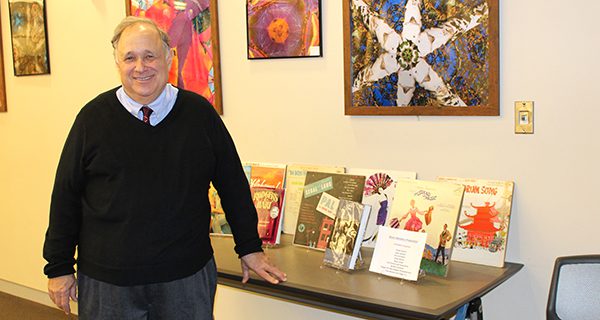[ccfic caption-text format="plaintext"]
By Laura Drinan
Hometown Weekly Reporter
Mount Rushmore is one of America’s national monuments that attracts millions of visitors each year. While the enormous sculpture features the faces of four U.S. presidents who had the greatest impact on the country, lecturer Bruce Hambro suggests there should be four different faces carved into the mountainside.
“Richard Rodgers,” said Hambro during his presentation at the Walpole Public Library. “To me, he’s just a musical genius. He belongs up there, I think, on Mount Rushmore with several other twentieth century American composers: George Gershwin, Cole Porter, Irving Berlin.”
While some weren’t too keen on the idea of the four composers replacing our former presidents on Mount Rushmore, the entire audience was in agreement that Bruce produced a fantastic presentation on two musical duos: Richard Rodgers and Lorenz “Larry” Hart, along with Rodgers and Oscar Hammerstein II.
With a background in music management and film, a former employee of Walt Disney’s, and a former history teacher, Bruce revamped his career to present lectures on famous entertainers, including Bing Crosby and Bob Hope, Frank Sinatra, and Barbara Streisand.
During his presentation, which was sponsored by the Friends of the Walpole Public Library, Bruce discussed the lives and careers of Richard Rodgers and the two lyricists. Through a fast-paced and minimalist slideshow, he kept the audience engaged and interested.
Bruce began with Rodgers and Hart’s partnership, which produced its first hit: “We’ll Have Manhattan” from the 1925 “The Garrick Gaieties.”
In 1931, the duo moved to Hollywood and wrote songs like “Mimi” and “Isn’t It Romantic?”
While the two had a successful partnership for 24 years, Hart was guilty of having an unreliable work ethic. He frequented speakeasies and had become an alcoholic when he died in 1943.
After Hart’s death, Rodgers partnered with Oscar Hammerstein II and together, they wrote dozens of Broadway musicals.
At the pinnacle of their careers, Rodgers and Hammerstein had four musicals on Broadway at the same time. However, Hammerstein died of a heart attack at the age of 65 in 1960.
Rodgers continued writing music after Hammerstein’s death. For the first time, Rodgers composed and wrote the lyrics for the musical “No Strings” in 1962.
“I enjoy doing this very much and I learned a lot,” said Bruce. “It’s very creative for me to make the slides because I love music and I love film. The main idea of this, though, is just to educate people on the music they grew up listening to.”
With Bruce’s knowledge and the audience’s passion for older films and music, the presentation was a hit.






















